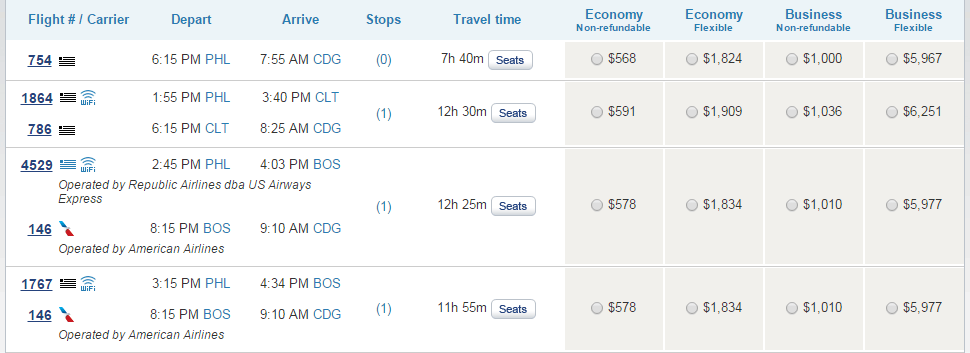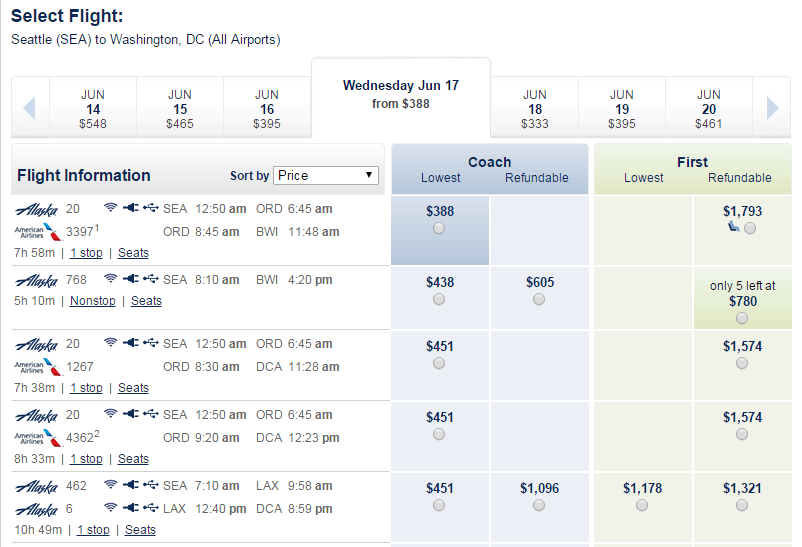I always want to write about topics that are interesting and useful to my readers, but I also know that everyone is at different places. Some people are working on getting out of debt, so things like investing and travel hacking are really not the most germane topics. in the same way, some people are expert flyers and know many of the tricks, while some are just getting started.
So this one is for those who are just getting started with buying airline tickets: the issue of “refundable” versus “nonrefundable” tickets.
I realized that this was a point of confusion recently when I had a conversation with someone who had just booked a flight from the US east coast to a major European destination. It turned out that he had paid about $4,300 for the round trip coach ticket.
What in the world?
Now, I know air travel has gotten expensive, and the ticket was for summer time, but really? I had done some research of my own, and found $1,200-$1,500 round-trip tickets. I confirmed that the ticket wasn’t actually a business class ticket, as that was the only thing that would make sense.
After further investigation, it turned out that he had purchased a “refundable” coach ticket.
Table of Contents
Fifty ways to learn to hover
(Joke courtesy of XKCD)
Buying an airline ticket, once you’ve decided on the airline and timing, isn’t just a matter of choosing coach or first (or business). There are usually secondary options for all of these. And while the names may differ depending on the airline, usually the options for each of these fare classes are broken up into “refundable” (or “flexible”) and “nonrefundable” options.


Here’s an example: Seattle to Washington DC on Alaska.

Notice the four different tiers, though not every tier is available on every flight.
What should you choose? The price conscious among us would unhesitatingly pick the cheapest option (which is highlighted).
But in Alaska’s case, they clearly want to push you in the “refundable” direction. Click the cheapest option and they’ll pop up an “are you sure?” dialog, telling you about the refundable option’s many benefits. “Because plans change.”

Your uncertainty costs money
“But what if something happens?” “What if I need to change my flight?”
Obviously, plans can change. And if you’re somehow laid-up in the hospital and unable to take your trip, it would be unfortunate to lose your flight.
And this is how they get you. By playing on your fear of uncertainty, they entice you to spend more on your flight.
Not convinced yet? Imagine that over a period of time, you take four trips that would cost $300 each when bought at lowest cost, and $600 if bought at the refundable level. Now, let’s also assume that “something happened” and you weren’t able to go on one of those trips. In the low-cost case, you go on three trips and are out $1200. In the refundable case, you get a refund for the trip you can’t go on, and spend…$1800.
So you see, over time, buying refundable tickets will cause you to spend more money, even if you have to write-off flights occasionally!
Refunding a non-refundable ticket
The above example I used is actually too generous to the refundable case. Because here’s the punchline: non-refundable tickets are actually refundable!
Well, sort of. Alaska charges a maximum of $125 for canceling a ticket. Some airlines will charge more. (Here’s a list.)
You can also change your flight to another date, and pay for that. Yes, even with a cheap ticket. This might be up to a few hundred dollars, but at least in that case you’re paying when you need to, as opposed to paying “just in case”. And when you change to another date, you haven’t lost the flight, only moved it.
So back to the scenario above: Four trips, $300 each, but one of those trips needs to be changed. In this case, you’d pay maybe $150 extra dollars, for a total of $1350. It’s still better than $1800.
In short, the best benefit I can find to buying a refundable coach ticket appears to be the ease at which you can cancel it after realizing that it was a mistake to have bought it in the first place.
If you’re really uncertain, don’t buy the ticket yet.
The $4,300 coach ticket
After doing some more research, the owner of the $4,300 round trip coach ticket was able to cancel the ticket, get fully refunded, and then purchase the exact same flight again: for $1,500.
And I didn’t even ask for a cut of the difference.
But enough about me. Have you ever bought a refundable ticket?


